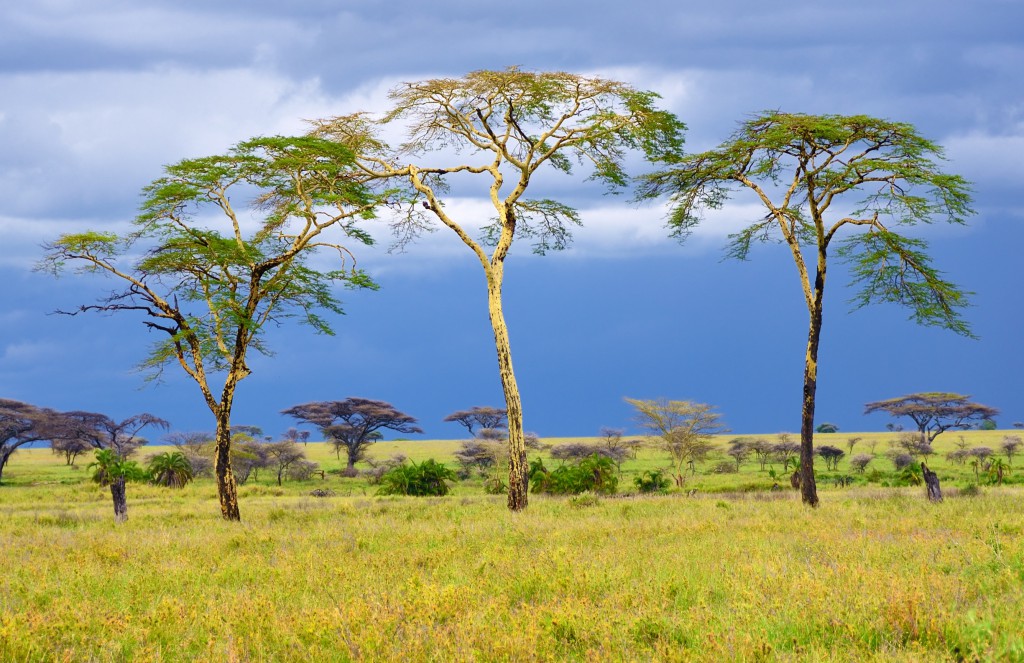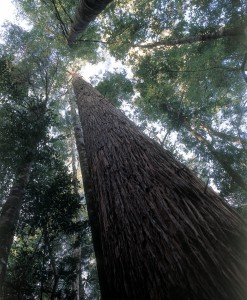
African savannah, Serengeti, Tanzania, acacia trees… height and shape determined by genetics and environment.
I think most would agree that the basic features of a tree are that they are typically tall and long lived.
Yes – trees are simply plants that have learnt to grow high and live for a long time. They grow tall to compete with other trees – racing upward and spreading outward for sunlight and water.
Also important, but less obvious, trees grow from the top. Some other plants that may also be tall, such as bananas and some palms grow from their base – that is from the ground. They are not trees. A tree usually has a rigid, woody, strong expanding trunk, or trunks, encased and protected by a layer of bark. These trunks support crowns of branches, twigs and leaves.

Tasmanian eucalypt forest: more than 700 species known around the world as gum trees.
Trees also have a complex root system acting both to anchor the tree to the ground and allow water and nutrients to be absorbed. With the constant imperative of seeking resources from the sky and the soil, given sufficient time, a tree can become huge – they just keep on growing.
Trees come in an amazing variety of forms from tall and narrow – as with many conifers – to the broad and spreading form of European oaks or African umbrella thorn trees. A tree’s height and shape is determined both by its genetic ‘blueprint’ and its environment.